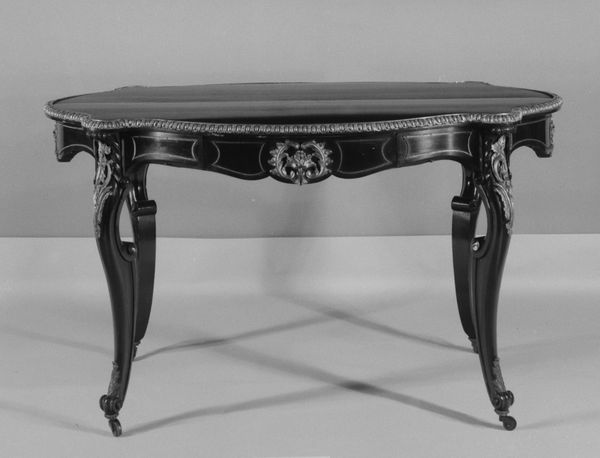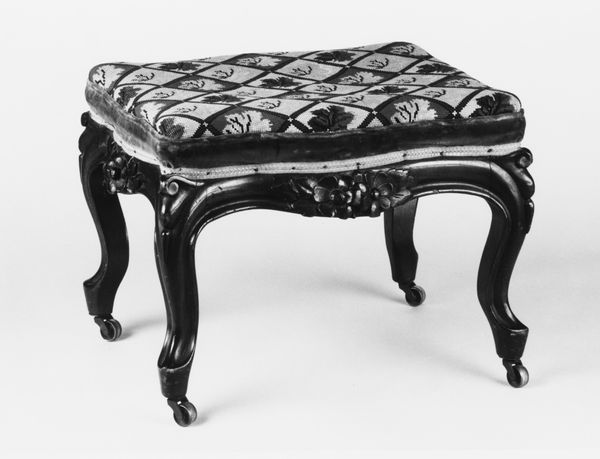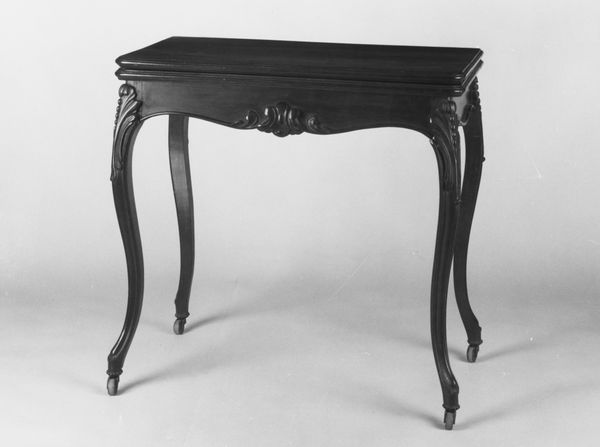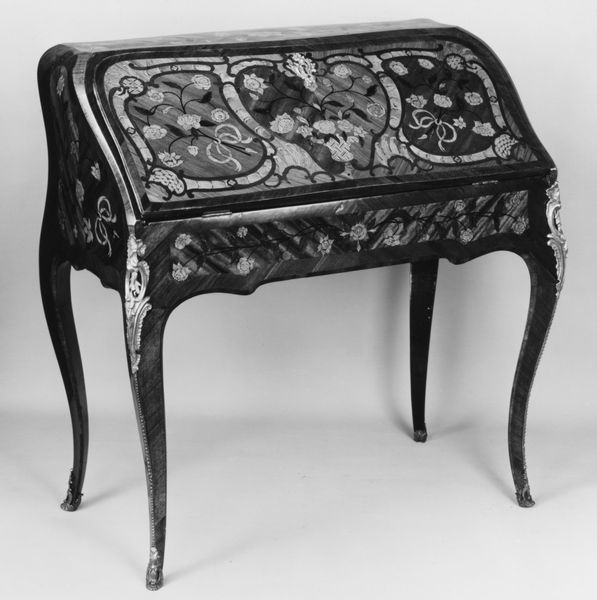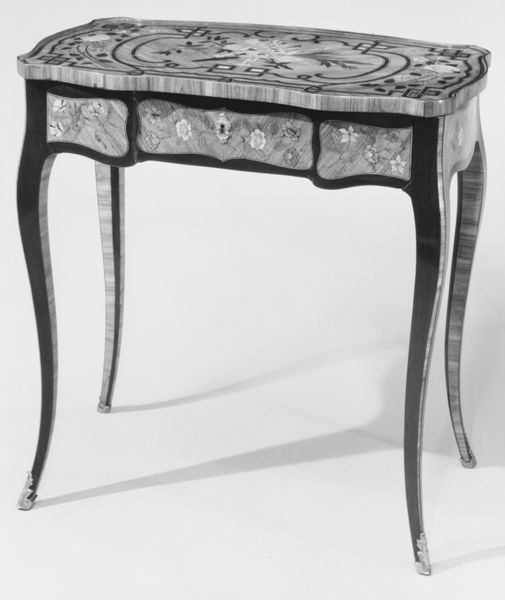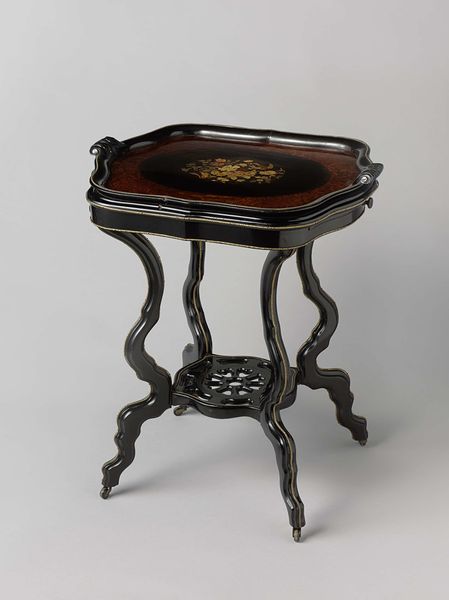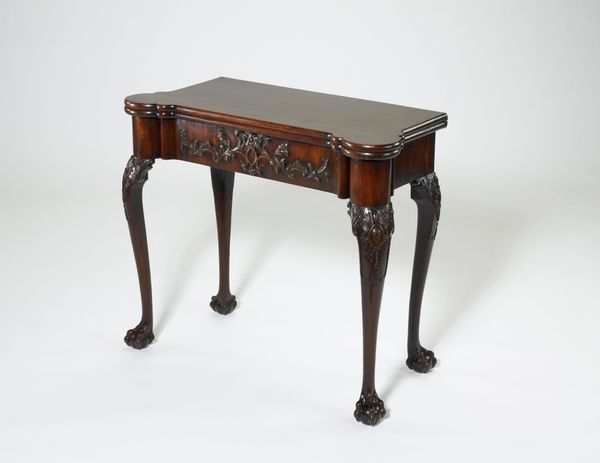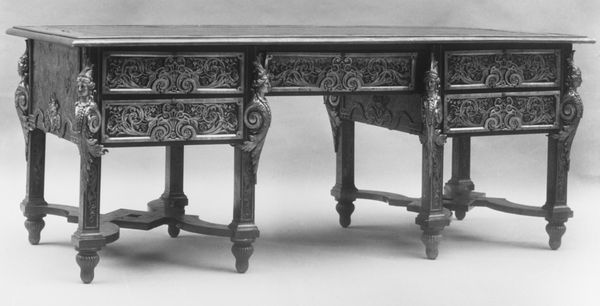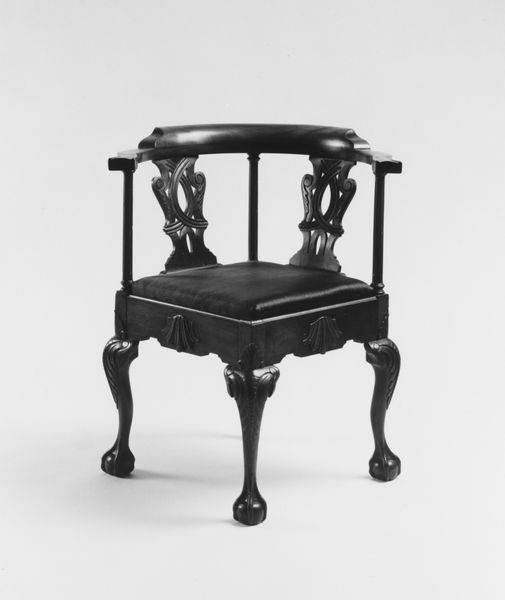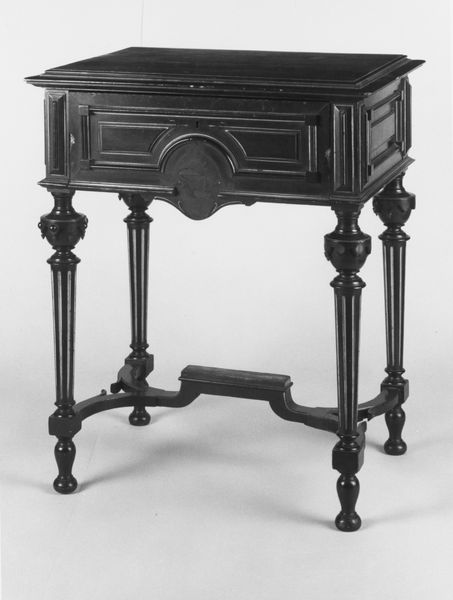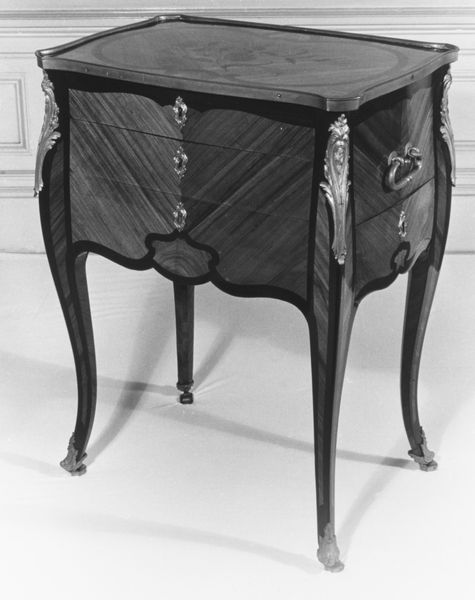
drawing, print, wood
#
portrait
#
drawing
#
neoclacissism
# print
#
furniture
#
geometric
#
united-states
#
wood
#
decorative-art
Dimensions: 8 1/2 x 14 x 10 1/4 in. (21.6 x 35.6 x 26 cm)
Copyright: Public Domain
Editor: Here we have Duncan Phyfe’s Footstool, circa 1797 to 1800, crafted from wood and residing at the Metropolitan Museum of Art. It’s surprisingly elegant for something so… functional. The dark wood and floral upholstery give it a somber yet refined feel. What do you see in this piece? Curator: I see a loaded symbol of early American identity and the complexities of taste during the Federal period. Neoclassicism, with its references to Greek and Roman antiquity, became intertwined with aspirations for democracy and refinement in the newly formed United States. How does this relate to the furniture we choose even today? Editor: That’s interesting! I hadn’t really thought about the political implications of a footstool. I just saw it as, well, a footstool. But you’re saying the style itself represents something bigger? Curator: Precisely. Think about the demographics of who could afford such decorative arts in the late 18th century. Objects like these also signal class and aspiration. Also, consider how "refined" aesthetics often come with the exclusion of certain voices. Do you see parallels with modern design trends? Editor: Definitely. Now that I think about it, that floral detail feels almost… defiant against the strict lines of the Neoclassical style. It's as if there's a push and pull. Is that tension important? Curator: Absolutely. That tension is where the conversation begins. What's included and what is excluded reveals deeper ideologies that go beyond aesthetic appreciation. Editor: That really makes me rethink how I look at even seemingly simple objects. It's not just about beauty, is it? Curator: Beauty is subjective, and often intertwined with power dynamics. Thinking about how identity, class and historical forces shape something like this can allow a richer and fuller appreciation for the work itself. Editor: I've never looked at decorative art in that way before. It really opens up new ways of interpreting even a Footstool. Curator: And, that, is how we keep the conversation going!
Comments
No comments
Be the first to comment and join the conversation on the ultimate creative platform.
